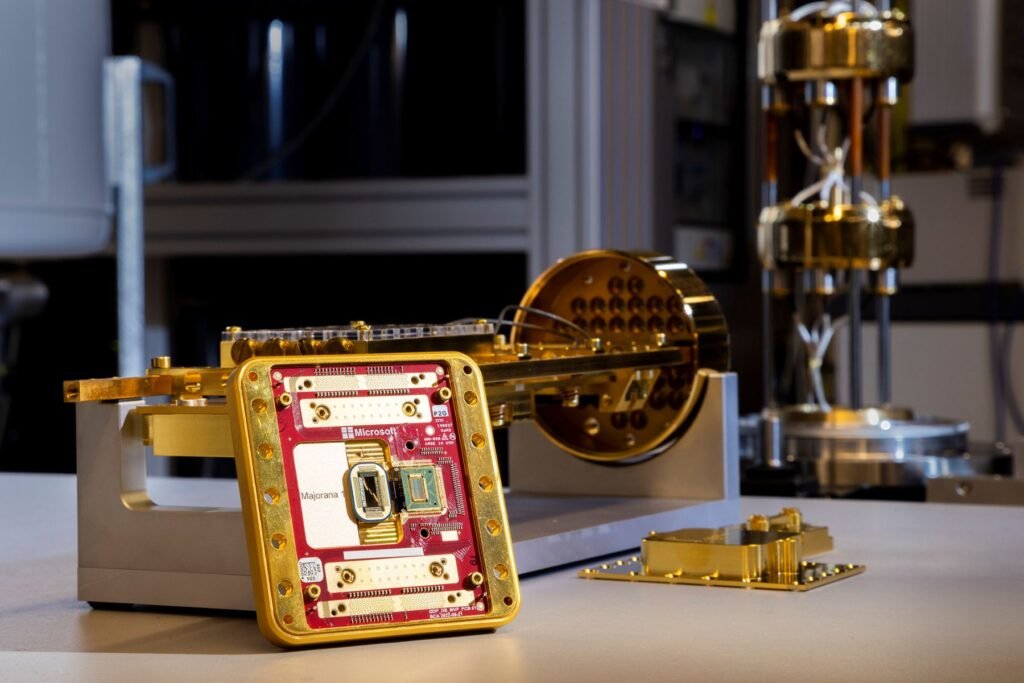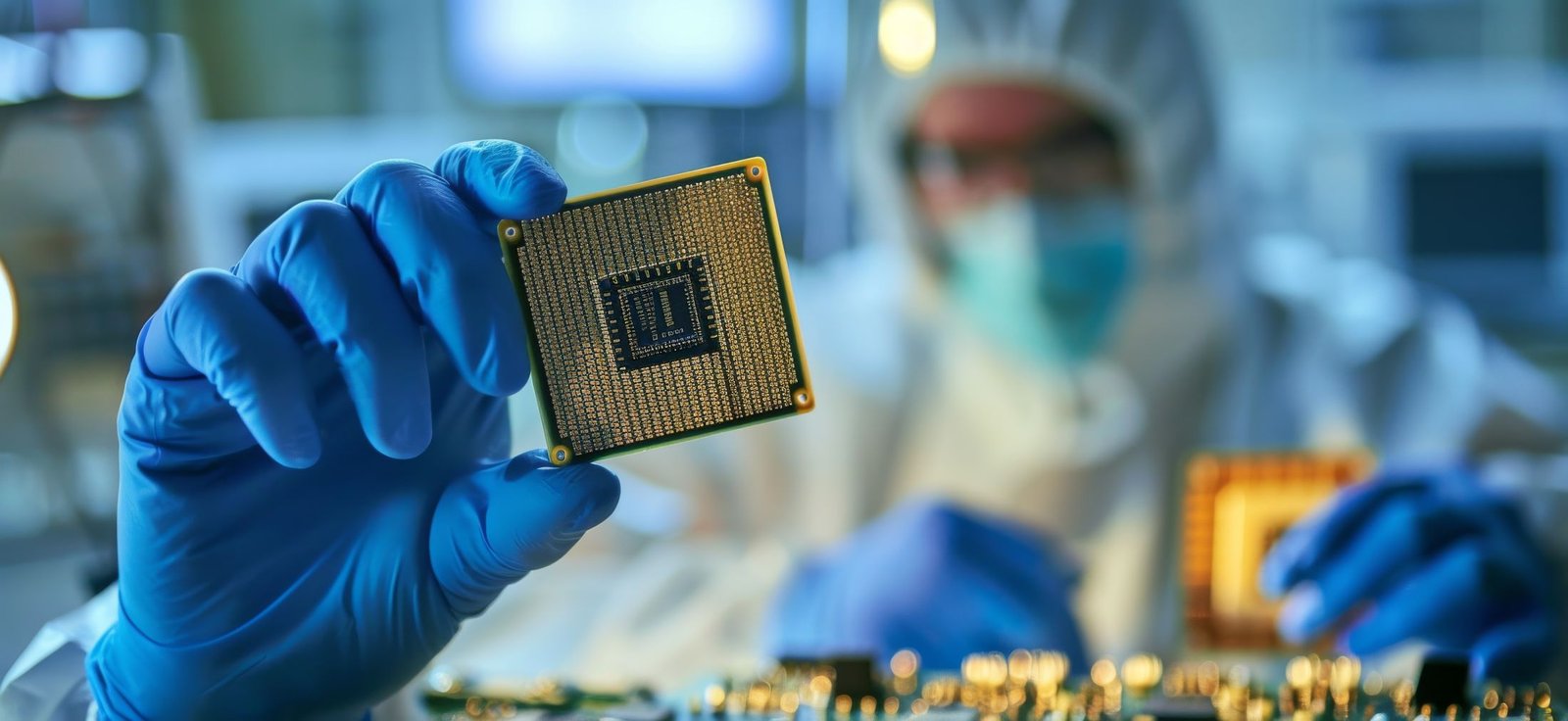Imagine a world where computers can solve problems beyond human comprehension—problems that would take centuries for today’s supercomputers to crack. Microsoft’s Majorana 1, a ground breaking quantum chip, is turning that vision into reality. Powered by a revolutionary Topological Core architecture, this chip is not just an advancement; it’s a paradigm shift in computing.
On This Page
Table of Contents
The Birth of Majorana 1: A Journey into the Future
The journey of Majorana 1 began with a simple yet profound question: What does the future of quantum computing require to become a practical reality? Microsoft’s dedicated research team, led by Chetan Nayak, sought the answer by pioneering a ground breaking approach—designing the first-ever topoconductor. This revolutionary material enables the observation and control of Majorana particles, an achievement that forms the backbone of a new generation of qubits. Unlike conventional qubits, which are prone to errors and instability, these topological qubits offer an unprecedented level of reliability and scalability.

The key breakthrough came from engineering materials at the atomic level, creating a structure that naturally supports Majorana particles. This discovery not only addressed the long-standing issue of qubit stability but also laid the foundation for a more efficient and scalable quantum computing architecture.
By shifting away from traditional error-prone systems, Majorana 1 provides a robust solution capable of handling complex computations that were previously considered impossible.
“We took a step back and fundamentally reconsidered what a quantum transistor should look like. That’s what led to this revolutionary step forward.” — Chetan Nayak
What Makes Majorana 1 Special?
Unlike conventional quantum computers that struggle to maintain stability, Majorana 1’s topological qubits naturally resist errors. This means they can operate efficiently at scale, making them a game-changer for industrial and scientific applications.
Traditional vs. Topological Qubits
| Feature | Traditional Qubits | Topological Qubits (Majorana 1) |
|---|---|---|
| Stability | Prone to errors | Intrinsically error-resistant |
| Scalability | Difficult to scale beyond thousands | Designed for millions of qubits |
| Control Mechanism | Requires precise tuning | Digitally controlled |
| Size | Requires large cooling systems | Compact, fits in one’s palm |
What sets Majorana 1 apart is its ability to overcome the primary challenges of traditional quantum computing: instability, scalability, and error correction. Conventional quantum computers rely on delicate, error-prone qubits that require extensive fine-tuning to function correctly. In contrast, topological qubits—the foundation of Majorana 1—are inherently stable due to their unique physical properties.
These qubits leverage topological protection, a phenomenon where quantum information is encoded in a way that makes it naturally resistant to environmental disturbances. This reduces the need for complex and resource-intensive error correction protocols, allowing Majorana 1 to operate with unprecedented efficiency.
Another game-changing feature of Majorana 1 is its scalability. Traditional quantum computers struggle to maintain coherence beyond a few thousand qubits. However, Microsoft’s topological qubit architecture is specifically designed to scale into the millions—an essential milestone for achieving true quantum advantage.
Moreover, Majorana 1 benefits from digital control mechanisms, replacing the fragile analog fine-tuning that traditional qubits require. This means that rather than constantly recalibrating qubits for precise operation, researchers can control Majorana qubits with simple on-off digital commands—making large-scale quantum computations significantly more practical.
From Concept to Reality: How Majorana 1 Works
Quantum computing demands an environment where qubits remain both stable and controllable. To achieve this, Microsoft developed a new materials stack, leveraging indium arsenide and aluminum, meticulously engineered at the atomic level. This sophisticated structure facilitates the emergence of Majorana particles, providing the stability and resilience required for robust quantum operations.
Why Majorana Particles Matter
- A Unique State of Matter: Majorana particles enable a topological state, distinct from conventional solid, liquid, or gaseous forms. —not solid, liquid, or gas, but a topological state.
- Intrinsic Error Resistance: They naturally encode quantum information in a way that is resilient to disturbances, reducing computational errors.
- Enhanced Stability and Control: By eliminating the need for constant analog fine-tuning, Majorana qubits can be manipulated digitally, akin to conventional transistors in classical computing. — They enable digital control, eliminating the need for analog fine-tuning
- Scalability Advantage: Their stability allows for a clear roadmap to scaling quantum systems beyond thousands and into the realm of millions of qubits. — They provide a robust foundation for qubits, making them more reliable
The Majorana 1 chip integrates these advancements into a digitally controlled quantum architecture, setting the stage for quantum computers that can tackle real-world challenges efficiently. By shifting from traditional fragile qubits to topologically protected ones, Microsoft is bridging the gap between theoretical quantum potential and practical large-scale implementation.
This breakthrough ensures that quantum computing is not just an academic pursuit but a transformative technology poised to redefine problem-solving across industries, from materials science to artificial intelligence.
The Path to a Million Qubits
Why a Million Qubits?
“If your quantum architecture doesn’t have a path to a million qubits, you’ll hit a wall before solving the big problems.” — Chetan Nayak
A million-qubit quantum computer could:
- Break down microplastics into harmless materials.
- Design self-healing materials for industries like construction and healthcare.
- Revolutionize chemical simulations, leading to breakthroughs in drug discovery and energy solutions.
All the world’s computers combined can’t match what a million-qubit quantum machine will achieve.
Digital Control: The Key to Quantum Success
Traditional quantum systems require delicate, fine-tuned analog controls for each qubit, making large-scale quantum computing impractical. Microsoft’s digital measurement approach changes the game:
Benefits of Digital Qubit Control
- Simplifies quantum computing by allowing on/off control like a light switch.
- Eliminates the need for massive cooling systems.
- Reduces hardware complexity, making scalable quantum computing feasible.
This shift toward digital control is the defining moment that makes a utility-scale quantum computer realistic in the near future.
The Commercial Race: Microsoft and DARPA’s Quantum Challenge
Microsoft’s quantum roadmap has caught the attention of DARPA (Defense Advanced Research Projects Agency), which evaluates cutting-edge technologies for national security.
Microsoft is now among the two companies invited to DARPA’s US2QC program, aiming to develop a fault-tolerant quantum computer with commercial applications.
“We always wanted to build a quantum computer for real-world impact—not just theoretical exploration.” — Matthias Troyer, Microsoft Technical Fellow
Quantum + AI: The Ultimate Innovation Engine
By combining Quantum Computing with AI, Microsoft envisions a future where:
- Materials scientists design perfect materials instantly.
- AI-powered quantum computing creates new drugs in record time.
- Quantum algorithms optimize global industries, from logistics to agriculture.
“Imagine a world where AI asks a quantum computer for a new material, and it simply gets the right answer—no trial and error.” — Matthias Troyer
This fusion of quantum mechanics and AI will unlock unprecedented scientific discoveries.
The Future is Closer Than You Think
Microsoft’s Majorana 1 chip marks the beginning of a new era. Unlike past predictions that placed practical quantum computing decades away, the latest innovations suggest we’re only a few years from realizing its full potential.
Key Takeaways:
✔ Majorana 1 is the world’s first quantum chip with topological qubits.
✔ It offers error resistance at the hardware level, making it highly stable.
✔ Microsoft’s breakthrough in digital control simplifies quantum computing.
✔ A million-qubit quantum computer will revolutionize industries.
✔ Quantum + AI will transform science, engineering, and everyday life.
The quantum age isn’t coming—it’s here. And with Majorana 1, Microsoft is leading the charge toward a future where the impossible becomes reality.
Additional Resources:
FAQs
What is Microsoft’s Majorana 1?
Majorana 1 is Microsoft’s groundbreaking quantum processor that utilizes Majorana zero modes, a novel type of particle that could enable stable and scalable quantum computing.
Why are Majorana zero modes important for quantum computing?
Majorana zero modes exhibit topological properties that make quantum states more resistant to errors. This helps in building more stable qubits compared to traditional superconducting or trapped-ion qubits.
How does Majorana 1 differ from existing quantum processors?
Unlike superconducting qubits (used by IBM and Google) or trapped-ion qubits (used by IonQ), Majorana 1 employs topological qubits, which are inherently more stable and promise longer coherence times.
What are the potential advantages of Majorana 1 over classical computing?
— Error-resistant qubits
— Better scalability for large quantum systems
— Faster processing for complex problems (e.g., cryptography, material science, AI)
How does Majorana 1 impact Microsoft’s Azure Quantum platform?
Microsoft aims to integrate Majorana 1 into Azure Quantum, enabling developers and researchers to experiment with quantum computing via the cloud.
When will Majorana 1 be available for commercial use?
Microsoft has not yet provided a specific launch date, but the development signals a major step toward practical quantum computing in the near future.








